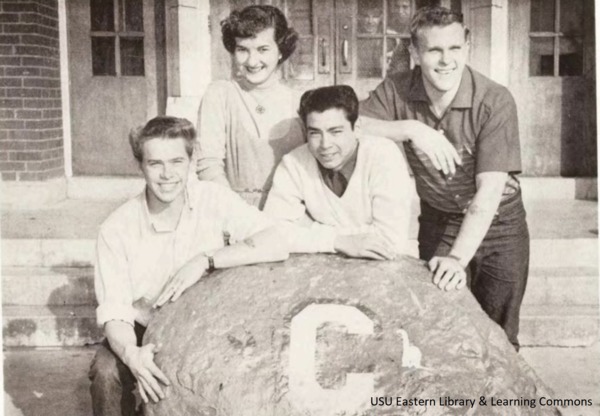Dublin Core
Title
Description
Upon its approval in 1937, Carbon College in Price became the first institution of higher education in eastern Utah. During one of his six terms as mayor of Price, J. Bracken Lee was part of a coalition of civic and education leaders who pushed for its founding. These leaders felt that the two-year junior college would lead to higher college enrollment among young adults from Carbon County and the surrounding area, by offering classes close to home that were geared toward technical education.
Despite his previous support, in Lee's first term as Governor in 1951, he set his sights on reducing the state’s education budget. Lee was convinced that education officials were asking for bigger budgets than they actually needed. Initially, he refused to increase per student spending, and in 1953 he sought to reduce spending further by scaling back the scope of Utah’s junior colleges. His plan involved returning three schools that the LDS Church had turned over to the state in the 1930s – known today as Snow College, Weber State, and Utah Tech. Lee's plan would have also closed Carbon College.
Once news leaked, the response from Utahns was swift and decisive: they wanted to save their schools. Even the LDS Church was ambivalent on the plan, agreeing to it because the alternative was to let the schools close. For Carbon College, the plan’s approval would make higher education more difficult to access for its rural students. When Utah's Legislature approved the Governor’s plan, the people of Utah gathered far more signatures than needed to force a referendum on the ballot in 1954 to overturn the plan.
Utahns went to the polls to vote on the measure and voiced overwhelming support for their junior colleges. It was a sharp rebuke to Lee’s fiscal policies and his record as governor of slashing education budgets. The schools Lee sought to close or transfer continue to educate the students of Utah to this day. Carbon College went on to become the College of Eastern Utah, and today it is part of the Utah State University system as USU Eastern, still housed in Lee’s hometown of Price.
Creator
Source
______________
See Susan A. Polster “The Process of Change in Utah's Junior Colleges from 1932-57.” Dissertation, University of Wyoming, 2002; Ronald G. Watt, “The College of Eastern Utah” in A History of Carbon County (Salt Lake City: Utah State Historical Society and Carbon County Commission, 1997).

